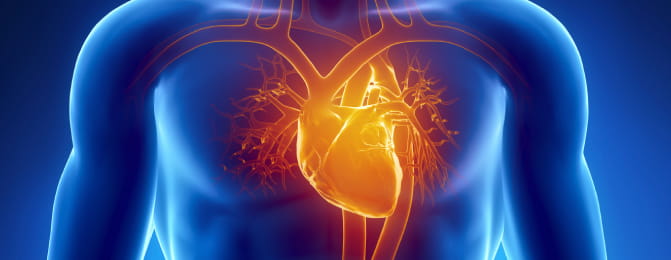'Plateau' in progress on heart disease, stroke deaths
By American Heart Association News

The rate of deaths from heart disease barely decreased last year while deaths from stroke increased slightly, and life expectancy continued to slip in the U.S., according to federal statistics released Thursday.
The annual report on mortality from the Centers for Disease Control and Prevention found that heart disease killed 647,457 people in 2017, more than any other cause. The rate was 165 deaths per 100,000 people, a slight drop from 165.5 the year before.
Deaths from stroke on the other hand, the fifth-leading cause, increased 0.8 percent between 2016 and 2017. There were 146,383 stroke deaths in 2017, or a rate of 37.6 per 100,000 people.
Last year, the CDC issued a report warning that a decades-long decrease in stroke death rates had "slowed, stalled, or in some cases, reversed in recent years."
"This plateau in our progress to reduce heart disease and stroke deaths is disappointing, and we know there is much work to still be done," said Dr. Ivor J. Benjamin, president of the American Heart Association. "As we continue to see more scientific evidence supporting links between cardiovascular disease risk factors and so many other conditions, we are expanding our work in new directions that could have a profound impact on multiple fronts of our lifesaving mission."
The AHA is investing millions into areas related to brain health, such as Alzheimer's disease, and diabetes, a major risk factor for heart disease, said Benjamin, director of the Cardiovascular Center at the Medical College of Wisconsin.
Research shows people living with diabetes are at least two times more likely to develop and die from cardiovascular disease. Numerous studies also have linked brain and heart health.
"The more we learn about the fundamental causes of all deaths, we see so many connections that come back to the same risk factors that lead to heart disease and stroke," Benjamin said.
The CDC report showed Alzheimer's disease is the No. 6 cause of death, just behind stroke, and diabetes ranks seventh. The data tracked a 2.4 percent rise in diabetes-related deaths, from 80,058 in 2016 to 83,564 in 2017. Alzheimer's disease deaths rose 2.3 percent, from 116,103 to 121,404.
Here are other highlights from the CDC's National Center for Health Statistics report:
- The 10 leading causes of death, in order, are heart disease, cancer, unintentional injuries, chronic lower respiratory diseases, stroke, Alzheimer's disease, diabetes, flu and pneumonia, kidney disease, and suicide.
- Life expectancy decreased by slightly more than a month, to 78.6 years in 2017, largely because of increases in mortality from unintentional injuries, suicide, diabetes, and flu and pneumonia. The life expectancy decline follows a trend in recent years, with rates continuing to drop slightly since the 2015 rate of 78.8 years. "Life expectancy gives us a snapshot of the nation's overall health," CDC director Dr. Robert R. Redfield said in a statement, "and these sobering statistics are a wake-up call that we are losing too many Americans, too early and too often, to conditions that are preventable."
- Overall, men fared worse than women when it came to life expectancy. For men, life expectancy dropped from 76.2 to 76.1 years in 2017, while life expectancy for women stayed the same at 81.1 years.
- Drug overdose deaths rose by 9.6 percent, with the majority listed as unintentional. The report said 70,237 Americans died from drug overdoses in 2017 – or 21.7 deaths per 100,000 people. Synthetic opioids, including fentanyl, were the biggest factor, the report said.
- Flu and pneumonia claimed 5.9 percent more people, rising from 51,537 deaths in 2016 to 55,672 in 2017.
- Suicide deaths increased by 3.7 percent, from 44,965 in 2016 to 47,173 in 2017. Suicide rates in the U.S. have increased since 1999 for both men and women, and rates in the most rural U.S. counties are nearly twice as high as rates in the country's most urban counties.
If you have questions or comments about this story, please email [email protected].





